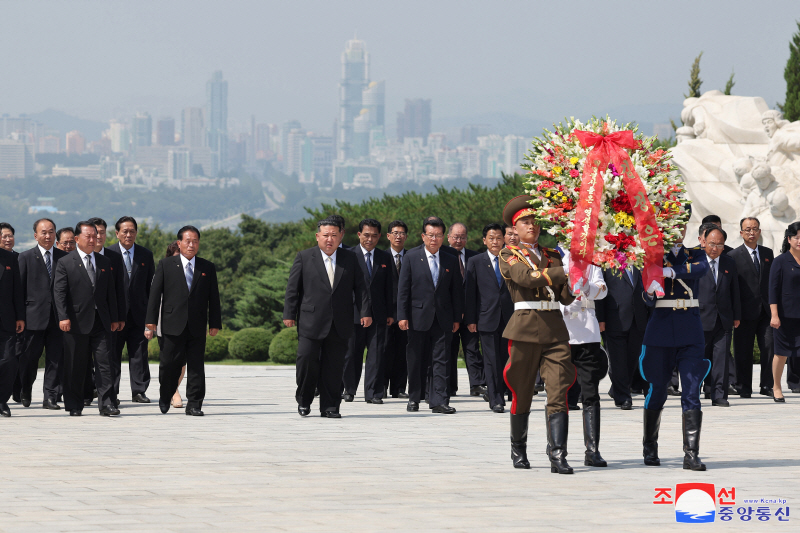On August 15, President Yoon Suk Yeol proposed a “Unification Doctrine,” rooted in the principle of freedom, during a ceremony celebrating Korea’s Liberation Day. He suggested the formation of a dialogue and consultation body between South and North Korea.
However, North Korea remained silent on the proposal the following day. Instead, North Korea’s state media highlighted the exchange of congratulatory messages between its leader, Kim Jong-un, and Russian President Vladimir Putin, underscoring their close ties.
According to North Korea’s Korean Central News Agency (KCNA) on August 16, Kim Jong-un and Putin exchanged congratulatory messages ahead of the Liberation Day, which North Korea calls “Day of the Liberation of the Fatherland.” In his message sent on August 13, Putin paid tribute to the Red Army soldiers and North Korean patriots who fought shoulder-to-shoulder for Korea’s liberation.

Putin emphasized, “bonds of friendship and mutual assistance consolidated in those days of the grim war still now serves as a reliable basis for the development of good neighborly relations between the two countries.”
He also expressed confidence that the thorough implementation of the agreements reached during the North Korea-Russia summit held in Pyongyang last June would further promote mutually beneficial cooperation, contributing to regional stability and security. During that summit, Kim Jong-un and Putin signed a “Comprehensive Strategic Partnership Agreement” that approaches the level of a military alliance.
In response, Kim Jong-un sent a reply to Putin on August 15, highlighting the “friendship and comradeship” forged through their shared struggle against a common enemy, interpreted as the United States. Kim Jong-un also underscored the “comprehensive strategic partnership and invincible comradeship” with Russia, expressing confidence in achieving victory in the “sacred war for regional peace and international justice.”
On the same day, Kim Jong-un visited the Liberation Tower, which honors Soviet soldiers who died in the Korean War, and the Revolutionary Martyrs Cemetery on Mt. Taesong, where anti-Japanese partisans and independence fighters are buried, to lay wreaths.

This was the first time Kim visited the Liberation Tower on Liberation Day, an act seen as an effort to highlight North Korea’s strengthened relationship with Russia. In June, during his visit to North Korea, Putin also paid tribute at the Liberation Tower.
So far, North Korea has not responded to President Yoon’s proposal for the “Unification Doctrine.” While President Yoon also suggested creating a working-level dialogue body between the authorities of both Koreas, it seems unlikely that North Korea will respond positively.
Additionally, the doctrine’s vision of establishing a unified democratic state on the Korean Peninsula, promoting international conferences on North Korean human rights, establishing a North Korean freedom and human rights fund, and expanding information access for North Korean residents could provoke strong opposition from Pyongyang.
There is speculation that Kim Jong-un may soon counter South Korea’s unification doctrine by advancing his “two-state theory” and move forward with enshrining it in North Korea’s constitution, as he had previously hinted.

The Supreme People’s Assembly, which holds the power to amend the constitution, has delayed its session for more than four months, an unusual occurrence, possibly to finalize preparations for abolishing the concept of unification and introducing new territorial provisions. The assembly could convene as early as next month.
However, Kim Jong-un’s proposed constitutional amendment could face internal resistance, as it involves abandoning the legacies of his predecessors, Kim Il-sung and Kim Jong-il, making it difficult to manage internal dissent.
BY HYUNJU PARK, YOUNGNAM KIM [park.hyunju@joongang.co.kr]




